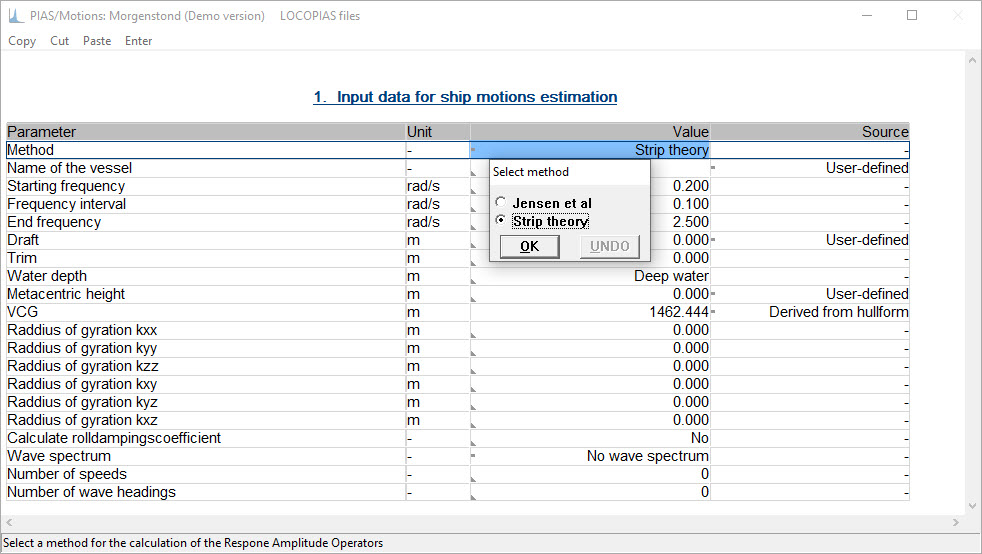PIAS module: Motions
In 2021 PIAS was extended with this module, for ship motions in seaway. It computes:
- Response Amplitude Operators.
- Significant values of amplitude, velocity or acceleration for any point on or connected to the ship.
- A comparison with threshold values for those points, resulting in a polar plot of acceptable and unacceptable combinations of heading and speed.
To this purpose, two computation methods are available, each with its own purpose and data requirements. The first is intended for the preliminary design stage, when only a limited number of design parameters are available, such as main dimensions, block coefficient and the vessel’s speed. Obviously, this method — based on the paper Estimation of ship motions using closed-form expressions by Jensen, Mansour and Olsen — is not aimed at the highest accuracy, but may serve well for parametric studies, also because of its computational speed.
Secondly, the familiar strip theory method is available in Motions. Although this method is in principle founded upon linearized theory, this specific implementation — as laid down in the public domain software PDstrip, by Söding, Bertram and Thiart— also contains some non-linear refinements. Yet, it is important to understand that PIAS/Motions has a scope and functionality in accordance with conventional textbook strip theory. If of assistance, SARC can advise on the benefits and applicability of PIAS/Motions for a specific case.


